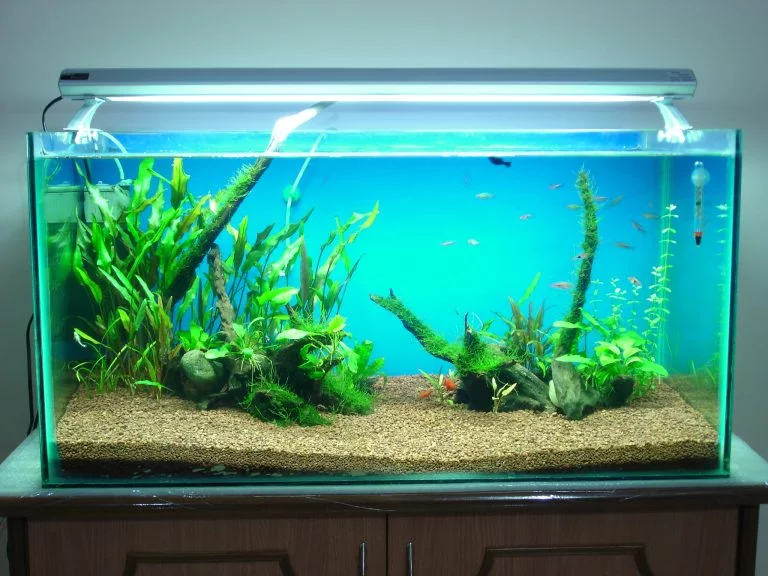What Is the Nitrogen Cycle — And Why It’s Crucial for Your Aquarium
Understanding the foundation of every healthy fish tank
Whether you’re setting up your very first aquarium or troubleshooting water quality issues, one thing always comes up: the nitrogen cycle. It’s the most important natural process in your tank—yet many new fishkeepers don’t know what it is or why it matters.
At The Fish Kingdom, we’re here to make it simple.
What Is the Nitrogen Cycle?
The nitrogen cycle is a biological process that naturally breaks down fish waste, uneaten food, and other organic material in your aquarium. It converts toxic compounds into safer forms, keeping your water clean and your fish alive.
The 3 Stages of the Nitrogen Cycle
Ammonia (Toxic!)
Fish release waste → waste turns into ammonia (NH₃). Even small amounts of ammonia are highly toxic to fish. Cloudy water, red gills, or gasping at the surface can be early signs.
Nitrites (Still Toxic)
Beneficial bacteria (Nitrosomonas) convert ammonia into nitrite (NO₂), which is also very toxic to fish.
Nitrates (Safer)
A second type of bacteria (Nitrobacter) turns nitrite into nitrate (NO₃). Nitrates are much less harmful and can be removed through water changes or absorbed by plants.
Why You Must Cycle Your Tank First
If you add fish to a tank before the nitrogen cycle is complete, toxic ammonia and nitrite will spike—this is called “new tank syndrome.” It often results in:
– Fish stress or death
– Algae blooms
– Cloudy water
– High maintenance and frustration
How to Cycle Your Aquarium (The Right Way)
Method 1: Fishless Cycling (Recommended)
– Add bottled ammonia or fish food to feed bacteria
– Use a bacteria starter like Seachem Stability or API Quick Start
– Test your water every few days
– The cycle is complete when:
✅ Ammonia = 0
✅ Nitrites = 0
✅ Nitrates are present (5–40 ppm)
Method 2: Cycling with Fish (Not Ideal)
– Can be done but exposes fish to toxic water
– Use hardy fish like danios or white clouds
– Requires daily testing and water changes
How Long Does Cycling Take?
On average: 2 to 6 weeks
Using filter media or substrate from a cycled tank can speed it up
Be patient—it’s worth the wait!
The Fish Kingdom Recommends:
– Seachem Stability or Fritz Zyme 7
– API Master Test Kit
– Gravel vacuum + dechlorinator
– Live plants for natural nitrate control
Pro Tip: Keep Your Bacteria Alive
Beneficial bacteria live in your filter, substrate, and decorations—not in the water alone. Don’t:
– Rinse filter media in tap water
– Replace all your filter components at once
– Let your tank dry out
Final Thought
Think of the nitrogen cycle as your aquarium’s immune system. Once it’s established, your tank will be more stable, easier to manage, and better for your fish. If you need help cycling your tank, just stop by The Fish Kingdom—we’ll walk you through it step by step.


Wp-marino
October 31, 2023Lorem lipsum dolor sit amet, adipiscfvdg fgjnving consectetur adipiscing elit dolor sit amet. Adipiscfvdg fgjnving consectetur adipiscing elit. dolor sit amet. Ipsum dolor sit amet, adipiscfvdg fgjnving consectetur adipiscing elit
Wp-marino
January 30, 2024Torem lipsum dolor sit amet, adipiscfvdg fgjnving consectetur adipiscing elit dolor sit amet. Adipiscfvdg fgjnving consectetur adipiscing elit. dolor sit amet. Ipsum dolor sit amet, adipiscfvdg fgjnving consectetur adipiscing elit
Wp-marino
January 30, 2024Fgjnving consectetur adipiscing elit dolor sit amet. Adipiscfvdg fgjnving consectetur adipiscing elit. dolor sit amet. Ipsum dolor sit amet, adipiscfvdg fgjnving consectetur adipiscing elit